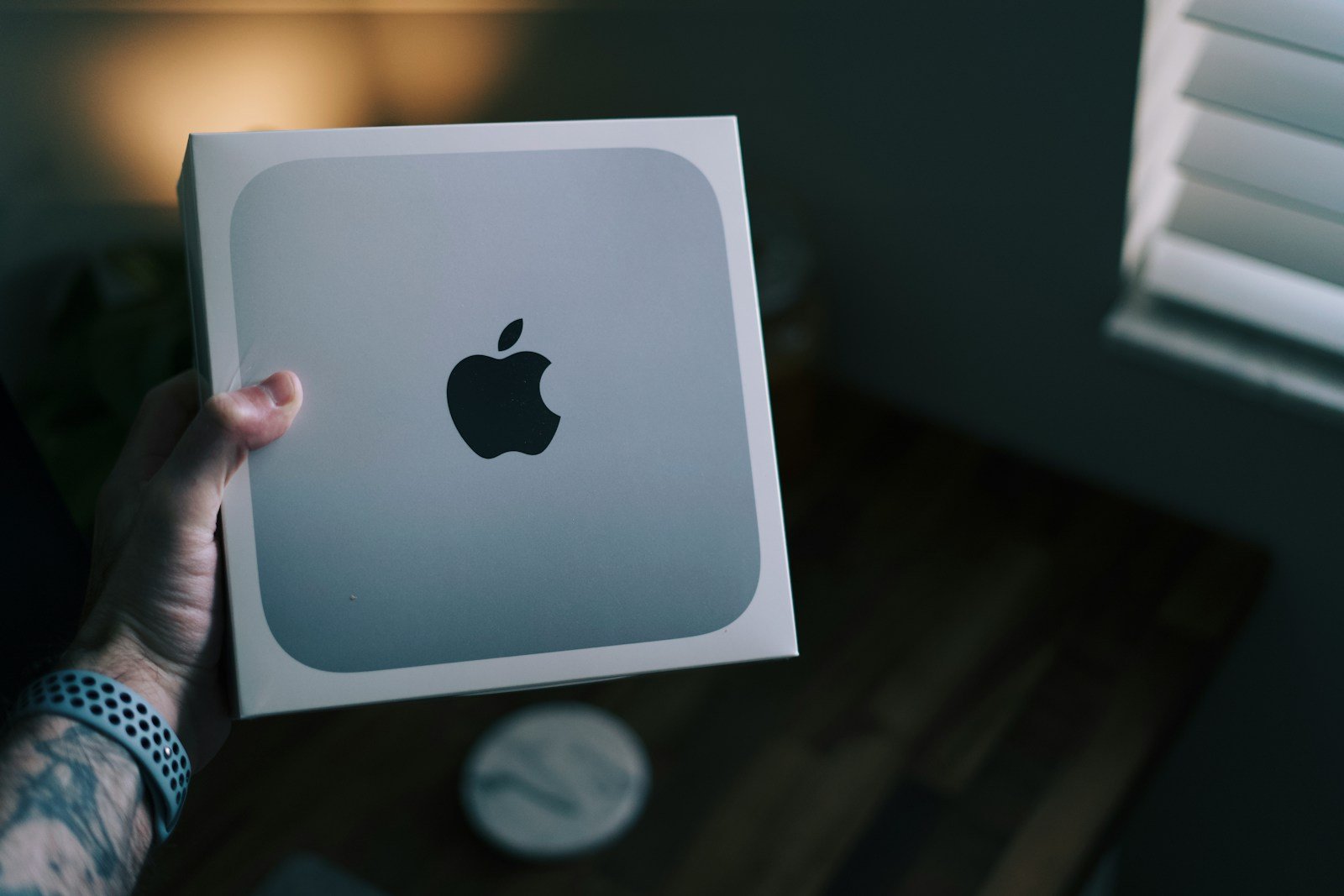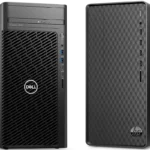Gaming on mini PCs has come a long way in 2025. These compact powerhouses now pack impressive hardware in small form factors that can fit almost anywhere. The latest models like the Asus ROG NUC and Minisforum AtomMan G7 PT offer gaming experiences that were once only possible on bulky desktop systems.
The Minisforum AtomMan G7 PT with its discrete RX 7600M XT graphics card stands out as the best overall mini PC for gaming this year. For those seeking alternatives, the Zotac ZBox Magnus One and Geekom AX8 Pro provide excellent performance in remarkably small packages. The AX8 Pro is particularly noteworthy for balancing size, gaming capability, and price.
Apple’s Mac mini with the M4 chip deserves mention as a versatile mini PC, though dedicated gamers might prefer Windows-based options with discrete graphics cards. The growing variety of mini gaming PCs means buyers can now find options across different price points without sacrificing too much performance.
Here are the best mini PCs for gaming in 2025.
🏆 1. Intel NUC 13 Extreme “Raptor Canyon”
- Why Gamers Love It: Intel’s flagship NUC delivers desktop-class performance in a compact chassis.
- Key Specs:
- Up to Intel Core i9-13900K
- Supports full-size GPUs (RTX 4080/4090)
- Modular design for upgrades
- Best For: Hardcore gamers who want a small form factor without compromising on power.
⚡ 2. MSI Trident X2 (2025)
- Why Gamers Love It: A mini gaming PC with a stylish, console-like design and RTX 40-series GPUs.
- Key Specs:
- Intel 14th Gen Core i7/i9
- NVIDIA RTX 4080/4090 options
- Advanced cooling system
- Best For: Gamers who want a living-room-friendly powerhouse.
🎯 3. Corsair ONE i500
- Why Gamers Love It: Known for its whisper-quiet liquid cooling and premium build.
- Key Specs:
- AMD Ryzen 9 7950X3D or Intel Core i9
- NVIDIA RTX 4090
- Compact vertical design with RGB accents
- Best For: Streamers and creators who need a balance of gaming + productivity.
🔥 4. Beelink GTR7 Pro
- Why Gamers Love It: A budget-friendly mini PC that punches above its weight.
- Key Specs:
- AMD Ryzen 9 7940HS
- Integrated Radeon 780M GPU (solid for 1080p gaming)
- Compact, portable design
- Best For: Casual gamers or those who want a travel-friendly PC.
🛡️ 5. CHUWI LarkBox X (2025 Edition)
- Why Gamers Love It: One of the smallest gaming-capable mini PCs, great for light gaming and emulation.
- Key Specs:
- Intel N100 (12th Gen)
- Intel UHD Graphics
- Affordable entry-level option
- Best For: Retro gamers, indie titles, and budget setups (source: Top 5 Mini PCs 2025).
🎥 6. ASUS ROG G22CH
- Why Gamers Love It: A compact ROG-branded powerhouse with customizable RGB and esports-ready performance.
- Key Specs:
- Intel Core i7/i9 (14th Gen)
- NVIDIA RTX 4070/4080
- Compact 10L chassis
- Best For: Competitive gamers who want a stylish, small form factor PC.
📊 Buying Guide: What to Look for in a Gaming Mini PC
- GPU Support: For AAA gaming, look for models with dedicated GPUs (RTX 4070–4090).
- Cooling: Compact designs need efficient cooling to avoid throttling.
- Upgradability: Some mini PCs allow GPU/SSD swaps; others are fixed.
- Budget:
- Entry-level ($500–$800): Beelink GTR7 Pro, CHUWI LarkBox X
- Mid-range ($1,000–$1,800): ASUS ROG G22CH, MSI Trident X2
- High-end ($2,000+): Intel NUC 13 Extreme, Corsair ONE i500
✅ Final Thoughts
In 2025, mini PCs are no longer a compromise—they’re true gaming machines.
- Best Overall: Intel NUC 13 Extreme
- Best Budget: Beelink GTR7 Pro
- Best Compact Console-Style: MSI Trident X2
- Best Premium Build: Corsair ONE i500
- Best Entry-Level/Light Gaming: CHUWI LarkBox X
Whether you’re after AAA performance, portability, or budget-friendly gaming, there’s a mini PC that fits your needs.
Key Takeaways
- Mini PCs now offer enough power for serious gaming in incredibly compact designs that can fit in any setup.
- Discrete graphics options like those in the Minisforum AtomMan G7 PT deliver performance comparable to larger gaming desktops.
- Connectivity options and expansion capabilities have improved significantly in the latest mini PC gaming models.
Cutting-Edge Hardware for Gaming Mini PCs
Mini gaming PCs pack powerful components into small spaces, delivering impressive performance for modern games without taking up much room on your desk.
Central Processing Unit (CPU)
The heart of any gaming mini PC is its processor. In 2025, the market offers excellent options from both major manufacturers.
AMD’s Ryzen 9 7945HX stands out with its impressive multi-core performance, making it ideal for gamers who also stream or create content. This powerhouse can handle demanding games while multitasking.
Intel’s newer Core Ultra 9 processors bring improved efficiency and AI acceleration features that enhance gaming experiences. These chips excel at single-core performance, which benefits many popular games.
When shopping for a mini gaming PC, look for models with adequate cooling systems. The compact nature of these devices can lead to heat buildup, potentially limiting CPU performance during extended gaming sessions.
Graphics Processing Unit (GPU)
The GPU is crucial for gaming performance, determining how smoothly games run and at what visual quality.
NVIDIA’s GeForce RTX 4070 has become a popular choice in premium mini PCs. This card delivers excellent frame rates at 1440p resolution and can handle ray tracing in modern titles.
AMD’s Radeon RX 7600M XT offers strong competition, particularly in the Minisforum AtomMan G7 PT, which reviewers consistently rank among the best gaming mini PCs of 2025.
For budget options, integrated solutions like AMD’s Radeon 680M provide surprisingly capable gaming performance for less demanding titles. This GPU comes built into certain Ryzen processors.
Remember that dedicated GPUs always outperform integrated options for serious gaming needs.
Memory and Storage Solutions
Fast memory and storage significantly impact gaming performance and overall system responsiveness.
RAM Requirements:
- 8GB: Minimum for basic gaming
- 16GB: Recommended for most games
- 32GB: Ideal for multitasking gamers
Dual-channel DDR5 memory has become the standard in high-performance mini PCs, offering superior bandwidth compared to previous generations.
For storage, a 512GB SSD represents the sweet spot for most gamers. This capacity allows for installing several large games while maintaining quick load times. Some premium models offer dual storage solutions, pairing a fast NVMe drive for system files with a larger SATA SSD for game libraries.
When choosing a mini PC, look for models with upgradeable storage and memory to extend the useful life of your system as requirements increase.
Connectivity and Expansion
Good gaming mini PCs offer robust connectivity options that can make or break your gaming experience. Modern ports and expansion capabilities ensure your system can handle multiple peripherals, displays, and network connections simultaneously.
High-Speed Data Transfer Interfaces
Mini gaming PCs now come equipped with impressive data transfer capabilities. USB-C and Thunderbolt 4 ports have become standard on premium models, offering transfer speeds up to 40Gbps. This allows for lightning-fast external storage access, crucial when installing large game files.
USB 4 compatibility is increasingly common on newer models, providing better resource allocation across connected devices. Most gaming mini PCs include several USB-A 3.2 ports as well, supporting transfer speeds up to 10Gbps.
Some high-end models like the Minisforum HX99G feature Thunderbolt connectivity that doubles as a charging port, reducing cable clutter on your desk. For gamers who use external SSDs to expand storage, these high-speed interfaces ensure minimal loading times.
Display Connections
Display output options are vital for gaming setups, especially for users running multiple monitors. Most gaming mini PCs include both HDMI 2.0 and DisplayPort 1.4 outputs, supporting 4K resolution at 60Hz or higher.
Some premium models offer multiple DisplayPort connections, enabling triple-monitor setups without adapters. The latest mini PCs can drive displays at 144Hz or higher, essential for competitive gaming where every frame matters.
HDMI 2.1 is starting to appear on high-end gaming mini PCs, supporting 8K resolution and higher refresh rates. This future-proofs your system for upcoming display technologies.
Mini PCs like the GMKtec M5 Plus offer dual HDMI ports, making them ideal for users who want to connect both a gaming monitor and a TV for different gaming scenarios.
Network and Peripheral Connectivity
Strong network connectivity is crucial for online gaming. The best gaming mini PCs now feature 2.5Gbps Ethernet ports, providing more bandwidth than standard Gigabit connections. This helps reduce ping and prevent lag during competitive online play.
Wireless options have improved dramatically as well. Most gaming mini PCs include Wi-Fi 6 or 6E, along with Bluetooth 5.4 for connecting wireless peripherals. These technologies offer lower latency and more stable connections than previous generations.
Audio connectivity remains important for immersive gaming. Quality mini PCs feature separate microphone and headphone jacks rather than a single combo port. Some include optical audio outputs for connecting to high-end sound systems.
Most mini gaming systems also include SD card readers, making it easy to transfer files or expand storage without using up valuable USB ports.
Frequently Asked Questions
Mini PCs have become serious contenders in the gaming world. Many gamers now consider these compact machines for their setups due to improvements in technology and performance capabilities.
What are the top-rated mini PCs for gaming currently on the market?
Several mini PCs stand out in 2025’s gaming landscape. The Minisforum Venus UM790 Pro has gained popularity for delivering solid gaming performance at a reasonable price point.
The latest models from Intel and AMD-powered systems like the Beelink GTR7 also rank high among gamers. These compact powerhouses pack impressive specs into small footprints.
Apple’s Mac mini with M3 Pro and M3 Max chips has surprised many with its gaming capabilities, though it remains better for professionals who game occasionally rather than dedicated gamers.
How do mini PCs with dedicated graphics cards compare to traditional gaming setups?
Mini PCs with dedicated GPUs now offer performance that was unthinkable in compact form factors just a few years ago. Many models include laptop-grade NVIDIA RTX or AMD Radeon graphics that can handle demanding games.
The gap between full-sized gaming towers and mini PCs continues to narrow. While traditional setups still offer better cooling and upgradeability, many gamers find the performance difference acceptable given the space savings.
Modern mini gaming PCs achieve 60+ fps in most titles at 1080p, with higher-end models even supporting 1440p gaming comfortably.
What are the best budget-friendly gaming mini PCs available?
The Minisforum Venus UM790 Pro stands out as an excellent budget option that can still handle modern games. It provides the minimum threshold for decent gaming performance without breaking the bank.
Acemagic offers several cost-effective models that include dedicated graphics options at lower price points than competitors. These systems provide good value for casual gamers.
Budget models typically come with at least 8GB RAM, though 16GB is recommended for better performance. Storage options usually start at 256GB SSDs with expansion possibilities.
Which mini PCs offer the best performance for gaming enthusiasts?
For enthusiasts wanting top performance, mini PCs with Intel Core i9 or AMD Ryzen 9 processors paired with RTX 4060 or better graphics deliver impressive results. These high-end options rival many mid-range gaming desktops.
The most powerful mini PCs now support ray tracing and DLSS technologies. This allows for more immersive gaming experiences previously unavailable in compact form factors.
Cooling remains a challenge, but manufacturers have developed innovative solutions including vapor chambers and multiple fans to keep temperatures manageable during intense gaming sessions.
How do recent mini PC models like the HX99G or Beelink SER8 measure up in gaming?
The HX99G has impressed reviewers with its balance of performance and thermal management. Its dedicated graphics solution handles most modern titles at medium to high settings smoothly.
Beelink’s SER8 represents a significant step up from previous generations. With improved CPU performance and better integrated graphics, it handles esports titles and many AAA games at reduced settings.
Both models demonstrate how far mini PC gaming has come, offering experiences that would have required full-sized desktops just a few years ago.
Are there any new compact gaming PCs that rival the performance of full-sized desktops?
Several new mini PCs now approach mid-range desktop performance levels. Models with desktop-class components in compact cases blur the line between categories entirely.
Manufacturer innovations in cooling and power delivery have enabled higher TDP components in smaller spaces. This allows for desktop-class performance without the size penalties.
While the absolute highest-end performance still requires full towers, the latest compact gaming PCs satisfy the needs of all but the most demanding enthusiasts and competitive gamers.







